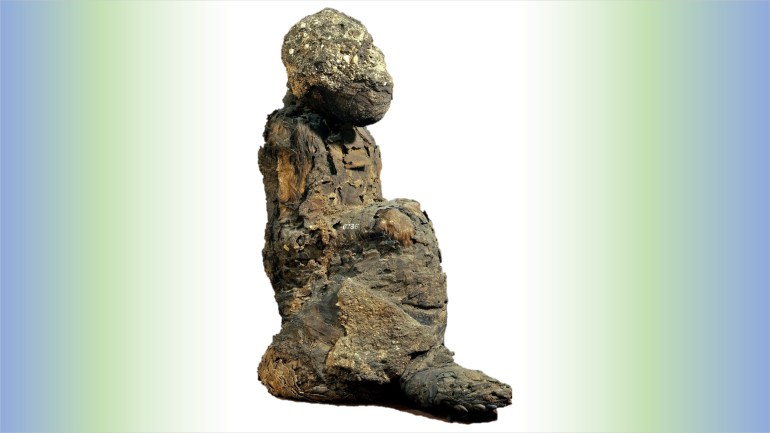Punt was a major center and trading partner for the ancient Egyptians for a period of at least 1,100 years.
It was an important source of luxury goods such as incense, gold, tiger skins and live baboons.
However, the geographical location of this country has been the subject of controversy among scholars for 150 years.
Scientists believe that it is located in an area bordering the Gulf of Aden;
Either in the African side or in the Arabian Peninsula.
However, a recent scientific study, whose results were published in the journal "eLife" on December 15, was able to locate the country of Punt, based on the geographical origin of the baboon, which the ancient Egyptians embalmed.
The study was led by scientists from Dartmouth College in the United States in cooperation with Egyptologist Dr. Salima Ikram of the American University in Cairo.
In the study, the scientists analyzed isotopes of the elements that make up the mummified baboon bodies discovered in the temples and tombs of the ancient Egyptians, and then compared them to the modern baboon found in eastern Africa and southern Arabia.
Trade exchange between Egypt and Punt led to the development of marine technology (Nina M. Davis-Wikipedia)
Early commercial exchange
According to a press release published by Dartmouth College, study leader Nathaniel Domeney stated, "The long-distance cruises between Egypt and Punt were an important point in human history. That is because imported goods, including baboons, were a major driver behind the early development of marine technology."
The trade movement between Egypt and Punt was the first navigation step on an interwoven maritime and trade route known as the Spice Route, which would contribute to the formation of geopolitical fortunes for thousands of years afterwards.
Domeni describes the trade exchange between Egypt and Punt as "the beginning of economic globalization."
Of course, the baboon played a central role in this trade.
The oldest evidence dating back to 3 thousand years BC indicates that the ancient Egyptians revered the baboon to the point of deification.
The frescoes and other works are decorated with drawings of the baboon (Papio hamadryas) sitting with its tail twisted to the right of its body.
This type of monkey is mummified in the same position as it is depicted with pieces of linen carefully wrapped around the limbs and tail.
Another species of baboon, Papio anubis, was mummified in a way that reflects his being underappreciated.
Mummified baboons helped locate Puntland (uric alart)
New positioning mechanism
Scientists have measured the isotopes of the elements oxygen and strontium to find out the geographical origins of the mummified baboon from the New Kingdom era (1550-1069 years BC) located in the British Museum, and to another from the Ptolemaic period (305-30 BC) found in the Petri Museum of Egyptian Antiquities in College University College London, United Kingdom.
Scientists compared this with results obtained from 155 modern baboons collected from 77 different locations in eastern Africa and southern Arabia.
Strontium is present in the rocky layers of the soil and is characteristic of some geographical locations but not others, and when this element decomposes, it infiltrates into the soil and water and then enters the elements of the food web of that site.
And when animals feed in these areas, they get some amount of the ingredient that forms their teeth, hair and bones.
Thus, scientists can determine the geographical location if their analyzes, for example, of tooth enamel, showed that it contained the element strontium.
Oxygen isotopes - the component component of drinking water, whose isotopes differ in different geographical locations - were also measured as an indication of how long monkeys lived in Egypt.
The exact location of two mummified baboons (uric alart)
Belad Bont website
The results showed that two mummified baboons from the New Kingdom era were most likely from Eritrea, Ethiopia, or Somalia.
Oxygen isotopes also showed that the holy baboons only lived short days or months after their arrival in Egypt, which is not enough time for the oxygen isotopes resulting from the monkeys drinking Egyptian water to leave an imprint on their tooth enamel.
Also, 5 Anubis baboons - mummified in the Ptolemaic era - showed levels of local strontium that reflect that their geographical origin was Egyptian, which puts us in front of a bewildering possibility of having a captive-raising program for baboons at that time in Egypt's history in Memph, the capital of ancient Egypt. Located in the northwest of the Red Sea.

